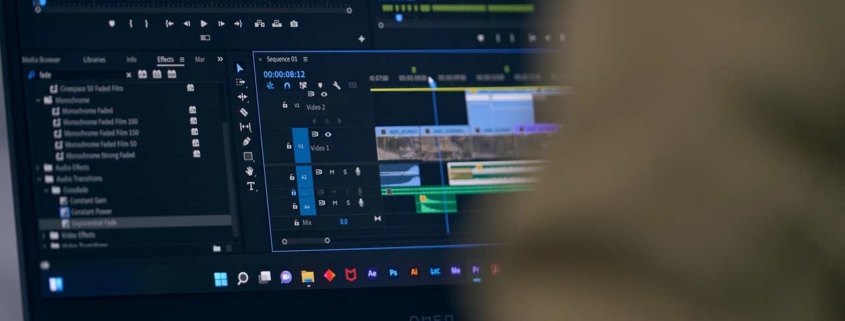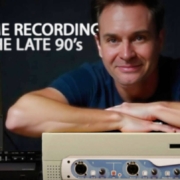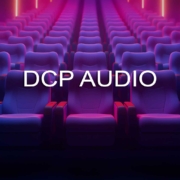Video Frame Rate and the Importance in Audio Post-Production
In the fast-paced world of the film industry, attention to detail is crucial. From frame rates to audio post-production, synchronization, and video editing, every aspect must be flawless. And let’s not forget about audio quality—it can make or break a film!
Whether you’re an experienced filmmaker or a valuable member of a production team, it is imperative to prioritize attention to detail during the production process. This commitment ensures that every aspect of your work is executed flawlessly and delivers exceptional results.
Audio Sync and Frame Rates
Audio synchronization issues are not only frustrating but can also have a negative impact on the overall quality of the final product. This is why it’s critical to ensure that all elements are perfectly synchronized throughout the production process. By addressing synchronization issues promptly and effectively, you can maintain a seamless viewing experience and deliver a high-quality end product that exceeds expectations.
What is frame rate and why is it important in production?
Frame rate refers to the number of individual still images, or frames, that a camera captures or a display shows per second. It’s measured in frames per second (fps). Think of it like a flipbook: each page is a frame, and the speed at which you flip the pages determines how smooth the animation appears. The human eye can’t process individual frames at a high speed, so when frames are displayed quickly, they create the illusion of continuous motion.
Common Frame Rates Used in Production
- 24 fps: The Cinematic Standard | The 24 fps (frames per second) frame rate is the long-established standard for most films and scripted television shows. It’s often associated with a “cinematic” look due to the slight motion blur it creates, which mimics how we perceive motion in real life.
- 30 fps: Live Broadcast and Gaming | A slightly higher frame rate, 30 fps, provides a smoother, more fluid experience compared to 24 fps. Live television broadcasts, sports, and news normally use this frame rate. It’s also widely used in many video games, striking a balance between smooth motion and manageable data storage.
- 60 fps and Beyond: The Hyper-Realistic Look | Frame rates of 60 fps and higher (including 120 fps and 240 fps) are all about maximizing smoothness and responsiveness. These rates are a necessity for fast-paced video games, where every millisecond of a player’s reaction time counts. They are also used for high-end broadcasts and in creating stunning slow-motion footage.
Why Audio and Video Go Out of Sync
 Common Scenarios
Common Scenarios
Imagine a video shot at 24 fps is processed as if it were a 25 fps video. The audio, which is tied to the original 24 fps timeline, will play back slightly faster than the video. This subtle difference may not be noticeable at first, but over a longer video, the delay between the sound and the visuals will become more and more apparent.
Another frequent problem occurs when audio is produced for a video with an incorrect frame rate. For example, an audio engineer might be given a video file that is labeled as 24 fps but is actually 25 fps. They will edit the audio to perfectly sync with the provided file. However, when the final video is assembled with the correct 24 fps settings, the sound will gradually drift out of sync with the visuals.
What audio issues can be caused by wrong frame rates?
A wrong frame rate can cause significant issues in audio production, affecting the overall quality and synchronization of the sound. When the frame rate is not set correctly, it can lead to various problems that can negatively impact the audio output. The most common cause is a mismatch between the frame rate of the video and the sample rate of the audio.
A mismatched frame rate can result in sync issues between audio and video elements. This means that when playing back a video with incorrect frame rate settings, the audio may not align properly with the visuals. This lack of synchronization can be incredibly frustrating for viewers and diminishes their overall experience.
The following issues can arise from wrong frame rates:
- Audio drift over time
- Audio edits don’t align with the video after post-production
- Dialogue sync is lagging
- SFX elements are not aligned
Frame Rate Discrepancies
Frame rate discrepancies can occur at any stage of the production process, causing frustration and delays. Imagine you’re currently in the audio post-production phase and have diligently used the appropriate frame rate throughout your session. Imagine this scenario: you’ve put in hours of effort, meticulously crafting the perfect mix, only to find out later that there’s an issue with the audio being out of sync. It can be incredibly frustrating and confusing to understand how this could have happened.
Here is a real-life scenario that happened in the film industry. A production company sent its film to another studio for color grading. Once the audio post-production was finished, they imported the color-graded video back into their system. To their dismay, they discovered that the audio was out of sync with the visuals! How could this happen? It turns out that even though both the video and audio sessions had matching frame rates, there must have been an unexpected issue during the transfer process.
Upon further investigation, it was discovered that the color grading for the film was mistakenly set at 24 frames per second (fps) in the session, whereas the original frame rate for production and mixing was 23.98 fps. When the final color-graded video was ready to deliver, it was exported back out as 23.98 fps, the correct frame rate. The impact of a seemingly minor alteration had far-reaching consequences for the film’s duration and audio synchronization. It resulted in extra costs that required additional effort to correct when assembling the final audio master.
Why is picture lock for audio post-production important?
Picture lock is crucial in audio post-production for several reasons. Firstly, it provides a stable and consistent visual reference for the audio team to work with. This ensures that the sound design, music, and dialogue can be perfectly synchronized with the on-screen action. Secondly, picture lock helps streamline the post-production process.
Finalizing the visuals allows the audio team to focus solely on creating and refining the audio elements without the need for constant adjustments due to changes in the picture. Additionally, picture lock helps maintain the creative vision of the project. Once the picture is locked, it becomes the foundation upon which the audio post-production is built. This ensures that the audio elements complement and enhance the visual storytelling, resulting in a cohesive and immersive final product. Overall, picture lock is essential in audio post-production as it ensures precision, efficiency, and artistic integrity in the final audio mix.
Ensuring Proper Communication between Audio Engineers and Video Editors
The collaboration between audio engineers and video editors is crucial to ensure a seamless integration of sound and visuals. The importance of effective communication cannot be overstated in this dynamic environment.
Audio engineers are responsible for creating the perfect audio experience that complements and enhances the visuals. They work diligently to capture high-quality sound recordings, mix and master audio tracks, and apply various effects to create a captivating auditory experience.
On the other hand, video editors meticulously piece together footage, add transitions and effects, and synchronize it with the audio elements. They have a keen eye for detail and strive to create visually stunning content that engages the audience.
To achieve a harmonious final product, proper communication between audio engineers and video editors is essential. By collaborating closely throughout the production process, they can ensure that both components align seamlessly. This involves sharing creative ideas, discussing technical requirements, addressing challenges together, and providing constructive feedback.
By fostering open lines of communication between these two key roles in media production, projects can be executed more efficiently while maintaining high standards of quality. A strong collaborative approach not only streamlines workflow but also allows for greater creativity as both parties can contribute their expertise to enhance the overall impact of the content.
In conclusion, recognizing the importance of collaboration and effective communication between audio engineers and video editors is paramount in ensuring a successful outcome. The seamless integration of sound and visuals requires close coordination throughout every stage of production. By embracing this collaborative mindset from start to finish, media professionals can deliver compelling content that captivates audiences around the world.


 Common Scenarios
Common Scenarios









